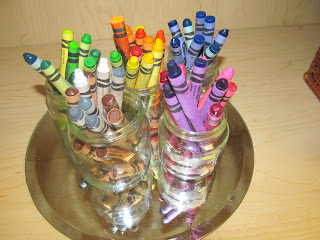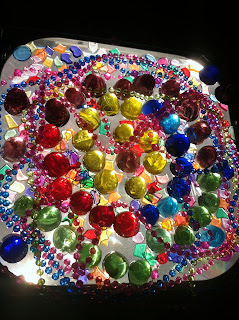The philosophy emphasizes that the environment is the third teacher. With this view of learning, the materials in the school have been selected with energy, thought, and care by the teachers.
When choosing materials, the teachers consider the ways in which it can be used, the aesthetic appeal, the quality of the material. Materials that are open-ended to be used in numerous ways are treasured. These materials extend the child's interest and assist in reinvention, problem-solving, and creative thinking. Aesthetically pleasing materials attract attention and can create a sense of wonderment in the environment. They help to encourage children to respect their space, which can be said about quality materials too. The quality of the material demonstrates to the child that she is a valued members in their community. The quality of the material shows the child that he is a capable learner within the group. These quality materials- often real world tools- tell the child that she is respected.
The timing of adding materials and the placement is also very important to the teachers at The Compass School. Materials are added to the environment frequently throughout the year to keep an ever evolving environment. The materials are surprises and unpredictable which creates excitement and renewed energy in the group dynamic. The location of the new material invokes discovery and exploration and can be reevaluated and changed according to the wishes and needs of the group.
Below are some examples of the materials in the classrooms in the Compass School.
(All photographs are by Brandi Davis unless otherwise noted.)
Gems on a mirrored plate
Cardboard rings
Tree blocks and leaves
Flooring samples and clothes line pins
Cardboard cylinders, clothes line pins, and flooring samples
Computer parts
Corks, rocks, wooden discs
Flooring samples
Tree blocks
Sea Glass, Stones, Marbles
Watercolor Paint in a spice rack
Tree Blocks
Hardware
Loose coins
Beads, rings, shells, starfish, rocks
(Photo by Taryn Pramuk)















.JPG)













